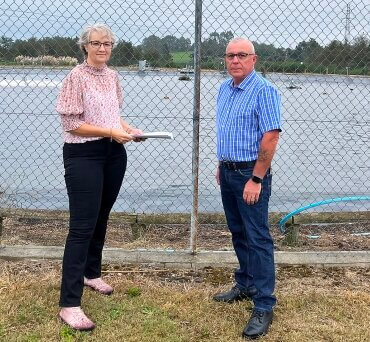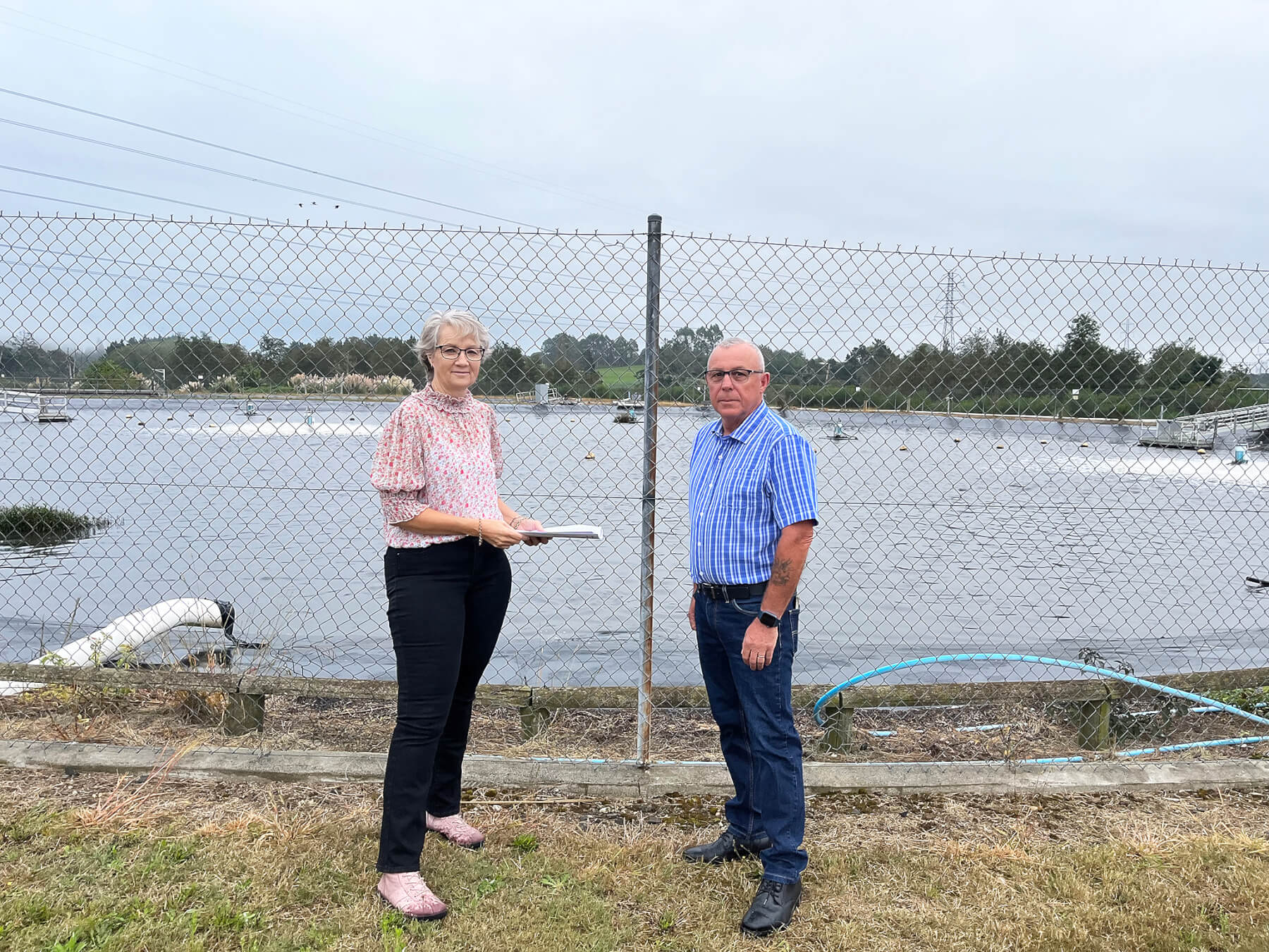

Dawn Inglis and council’s water services manager Martin Mould on site at the existing wastewater treatment plant in Cambridge. Photo: Supplied.
Contracts worth $86 million – a record for the Waipā District Council – have been announced for a solar-powered wastewater treatment plant in Cambridge.
Work on a three-year $100 million project is expected to start next month and the plant – which will be among the most advanced in the country – will be running by June 2026.
It will replace a 50-year-old plant in Matos Segedin Driver and treat wastewater from Cambridge, Leamington, Hautapu and Karapiro Domain.
The plant will have a smaller footprint on the 37ha site and unused land will be “remediated and put to other use” by Waipā District Council.
The plant will include its own solar farm to generate enough energy to power the plant during the day.
Wastewater treatment in Cambridge was a headline issue when soon to be elected mayor Susan O’Regan uttered “Lordy, Lordy, Lordy” in response to a rival candidate’s warning that Cambridge would “drown in our own poo” without a new wastewater treatment plant and an infrastructure upgrade.

After the debate where Susan O’Regan said Lordy, Lordy, Lordy: Mayoral candidates Jim Mylchreest, O’Regan and Chris Woodhams with debate moderator Peter Carr. Photo: Mary Anne Gill
Work on designing the plant began in 2021. Council has worked alongside a Kaitiaki Advisory Group and a community group.
Group manager service delivery Dawn Inglis said construction of the plant aligns with work by Hamilton City Council, Waikato District Council, Waipā District Council and tangata whenua on developing a detailed business case for wastewater processing across the Waikato sub-region.
That work has already identified the need to upgrade the existing wastewater plant at Te Awamutu. Work on an upgrade for the Te Awamutu could begin in 2035.
Inglis said the plant will cope with Cambridge’s fast-growing population and also meet much higher environmental standards and commitments to the Waikato River.
“Our existing plant receives wastewater, treats it and then discharges it to land before the water travels to the Waikato River as groundwater. While this form of treatment has been acceptable in the past, environmental standards are now much higher.
“We also have higher aspirations, and legal obligations to the health of the Waikato River. The new plant will treat wastewater to a very, very high standard using specialised membrane bioreactor technology. It will be one of the most advanced plants in New Zealand and something to be proud of.”
A resource consent application was lodged with the Waikato Regional Council before Christmas and is now being publicly notified.
Contracts have been let for specialist inlet works equipment design, manufacture, delivery and commissioning and staff training to Spirac Pty Ltd, the supply and commissioning of membranes and peripheral equipment to Veolia Water Technologies and Solutions and plant construction (to Spartan Construction).








